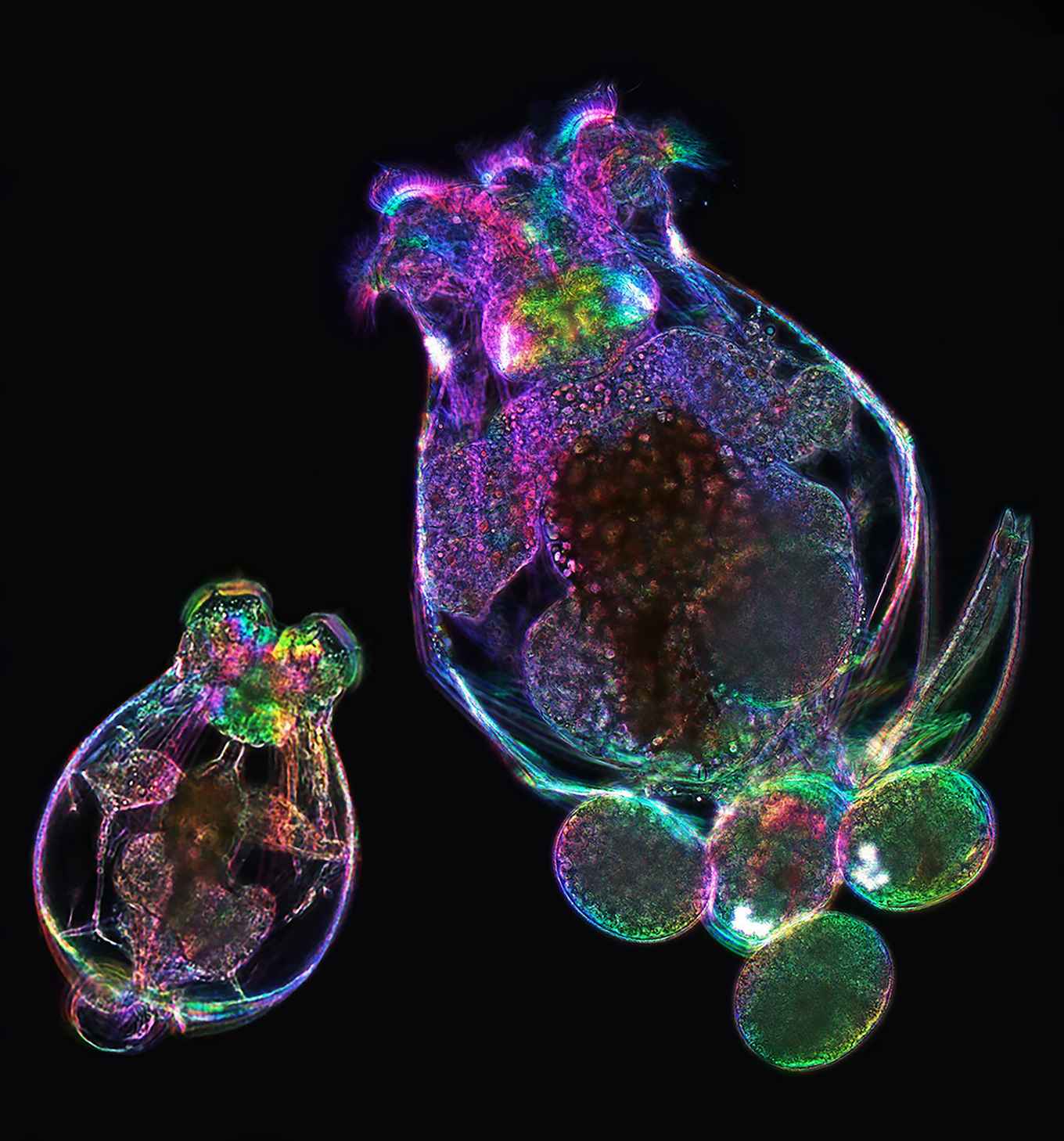Why are offspring of older mothers less able to live long and prosper?
6 July 2020

This effect of older maternal age is called maternal effect senescence. In this new study, the scientists evaluated the evolutionary fitness of rotifers (microscopic invertebrates) exhibiting maternal effect senescence, in several real and simulated environments, including the relative luxury of laboratory culture, under threat of predation in the wild, or with reduced food supply. They confirmed that the effect of older maternal age does reduce evolutionary fitness of the rotifers in all environments, primarily through reduced fertility during their peak reproductive period. They also suggest an evolutionary mechanism for why this may occur.
Mathematical modelling
The study was a collaboration between Silke van Daalen and Hal Caswell of the University of Amsterdam, Kristin Gribble of the Marine Biological Laboratory and Christina Hernández and Michael Neubert of Woods Hole Oceanographic Institution. 'The combination of innovative population models and high quality laboratory data let us give both age and maternal age their proper places in the life cycle model, and explore maternal effect senescence more completely than previously possible,' explains Hal Caswell, professor of Mathematical Demography at the UvA Institute for Biodiversity and Ecosystem Dynamics. Silke van Daalen, PhD candidate within the same institute, added: 'We are continuing these analyses in new directions; it is one of the most enjoyable aspects of collaboration between theoretical and experimental researchers.'
Natural selection should favour rotifers whose offspring live long and prosper. So why do we see maternal age senescence in so many species? To address this, the research team built mathematical models to calculate, for the first time, the strength of natural selection pressure on the survival and fertility of offspring populations as functions of the age of their mothers. They found this pressure, called the selection gradient, declines with maternal age.
Decreased fitness
‘Because the selection pressure decreases as the mothers age, it may not be strong enough to remove these less-fit offspring from the population,’ Hernandez says. ‘Because of this, maternal effect senescence will persist and continue to evolve in the population, even though it results in decreased fitness,’ Gribble adds. They don’t yet fully understand the genetic mechanisms that cause offspring quality to decrease with maternal age.
The models that the team developed can be applied to a wide range of species to evaluate the fitness consequences of maternal effect senescence. ‘As long as you have experimental data, as we did, on lifespan and fecundity of offspring from mothers of different ages, you can address this question in many organisms,’ Gribble concludes.
Publication details
Christina M. Hernández, Silke F. van Daalen, Hal Caswell, Michael G. Neubert and Kristin E. Gribble: ‘A demographic and evolutionary analysis of maternal effect senescence,’ in PNAS (2020). DOI: 10.1073/pnas.1919988117